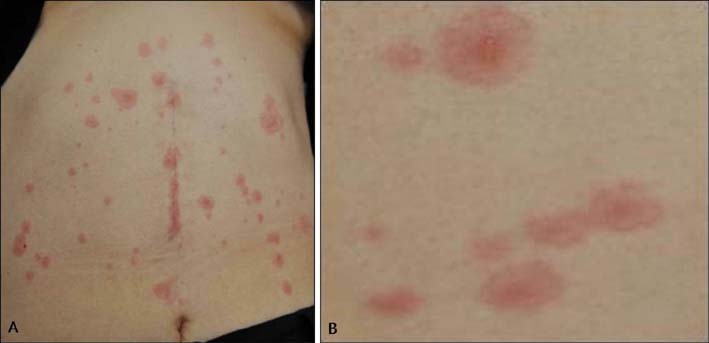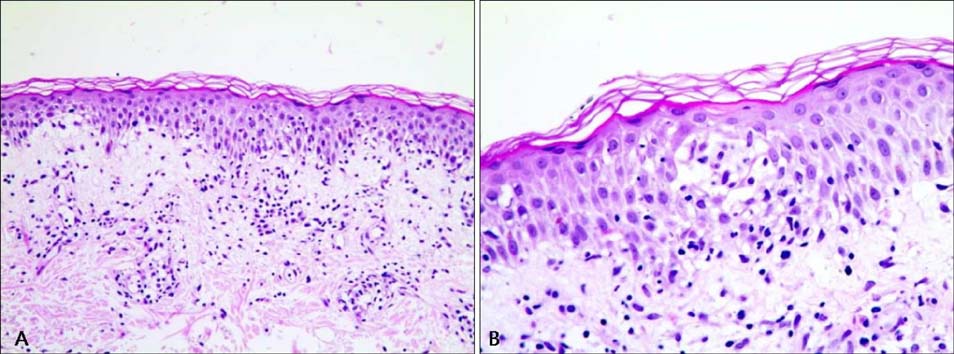Ann Dermatol.
2015 Oct;27(5):641-643. 10.5021/ad.2015.27.5.641.
Imatinib Mesylate-Induced Erythema Multiforme: Recurrence after Rechallenge with 200 mg/day Imatinib
- Affiliations
-
- 1Department of Dermatology, Hallym University Sacred Heart Hospital, Anyang, Korea. anpark7770@hanmail.net
- KMID: 2171478
- DOI: http://doi.org/10.5021/ad.2015.27.5.641
Abstract
- No abstract available.
Figure
Reference
-
1. Valeyrie L, Bastuji-Garin S, Revuz J, Bachot N, Wechsler J, Berthaud P, et al. Adverse cutaneous reactions to imatinib (STI571) in Philadelphia chromosome-positive leukemias: a prospective study of 54 patients. J Am Acad Dermatol. 2003; 48:201–206.
Article2. Brouard M, Saurat JH. Cutaneous reactions to STI571. N Engl J Med. 2001; 345:618–619.
Article3. Park HJ, Kim HS, Kim HJ, Lee JY, Cho BK, Lee AW, et al. Immunohistochemical characterization of cutaneous drug eruptions by STI571. J Dermatol Sci. 2005; 38:9–15.
Article4. Hsiao LT, Chung HM, Lin JT, Chiou TJ, Liu JH, Fan FS, et al. Stevens-Johnson syndrome after treatment with STI571: a case report. Br J Haematol. 2002; 117:620–622.
Article5. Lee JH, Chung JY, Jung MY, Kim CR, Park JH, Park JH, et al. Lichenoid drug eruption after low-dose imatinib mesylate treatment. Ann Dermatol. 2013; 25:500–502.
Article
- Full Text Links
- Actions
-
Cited
- CITED
-
- Close
- Share
- Similar articles
-
- A Case of Lichenoid Drug Eruption Associated with Imatinib Mesylate
- A Case of Generalized Keratosis Pilaris Induced by Imatinib Mesylate
- Imatinib-induced hepatitis treated by corticosteroids in a patient with metastatic gastrointestinal stromal tumor
- Successful Rechallenge with Imatinib in a Patient with Chronic Myeloid Leukemia Who Previously Experienced Imatinib Mesylate Induced Pneumonitis
- Exacerbation of Psoriasis after Imatinib Mesylate Treatment



